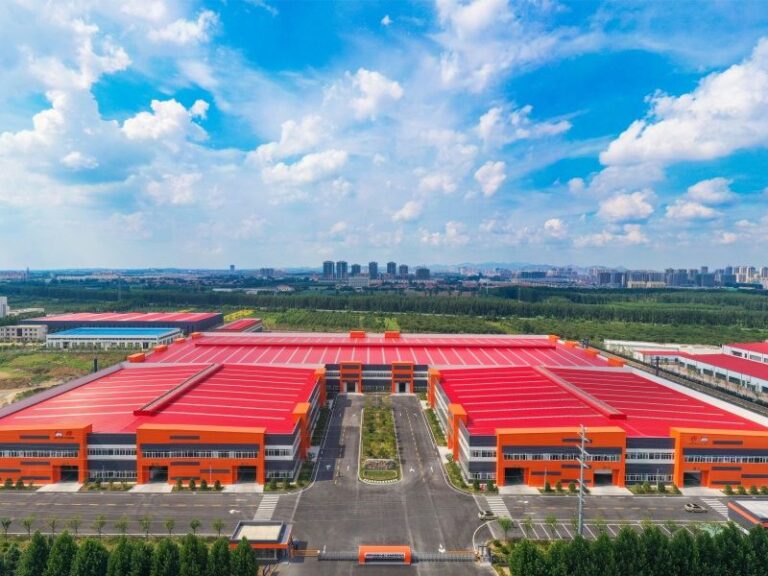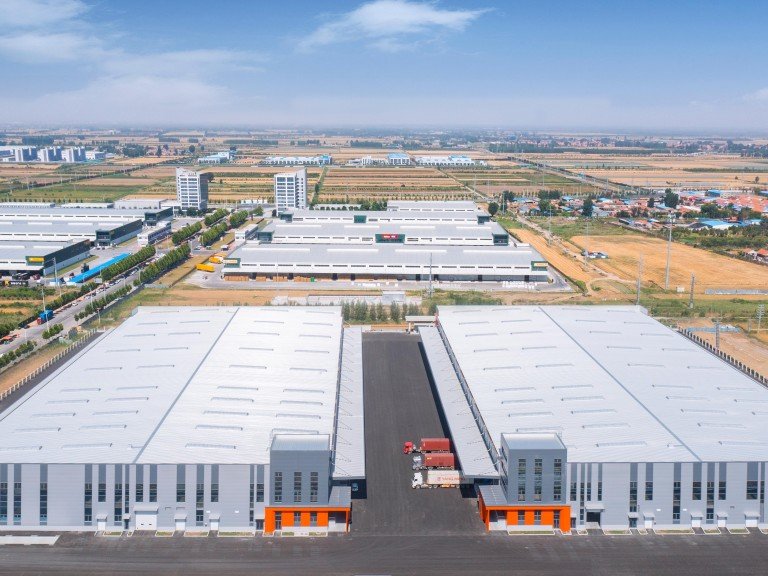Steel buildings are known for lasting longer than concrete and wood. When built and maintained right, they can last over 100 years. But what makes them last so long, and how can owners get the most from their investment?
At Xinguangzheng Group, we focus on making metal buildings that last. We build commercial, agricultural, and industrial metal structures. With 28 years of experience, we know how design, quality, and maintenance extend a building’s life.
Knowing what affects a metal building’s life is key. We can make the most of steel construction by looking into ways to make these structures last longer, from design to maintenance.
Table of Contents
Understanding the Lifespan of Metal Structure Buildings
Knowing how long metal buildings last is important for making smart choices. Their life depends on many things, like where they are, the materials used, and how well they are kept up.
Expected Lifespan of Well-Maintained Steel Buildings
Steel buildings that are well cared for can last 50 to 100 years or more. This is because steel fights off pests, mold, and mildew well.
| Building Type | Expected Lifespan | Factors Influencing Lifespan |
| Industrial Steel Buildings | 50-75 years | Heavy machinery usage, environmental exposure |
| Commercial Steel Buildings | 60-90 years | Maintenance quality, local climate conditions |
| Agricultural Steel Buildings | 40-70 years | Exposure to chemicals, weather conditions |
Factors That Influence Metal Building Durability
Many things can affect how long a metal building lasts. Where it’s located, what it’s used for, and how it’s built are all important. For example, buildings near the sea might need extra protection against salt.
The quality of materials and how well a building is built also matter a lot. New ways to make steel and apply protective coatings have made metal buildings last even longer.
Start your project today with a tailored price estimate for your steel building.
Key Advantages of Metal Buildings for Long-Term Durability
Metal buildings last a long time because of several key benefits. At Xinguangzheng Group, we use these benefits to make buildings that are built to last in their environment.
Superior Tensile Strength and Structural Integrity: Steel buildings are strong because of steel’s high tensile strength. They can handle extreme weather, like strong winds and heavy snow. The mix of metals like iron and carbon makes them even stronger and lighter.
Resistance to Common Deterioration Factors: Metal buildings don’t rot, get eaten by termites, or catch fire like other materials do. Steel doesn’t burn, keeping buildings and what’s inside safe. Plus, steel doesn’t change shape with moisture or temperature changes, so it doesn’t warp or crack.
Adaptability to Changing Requirements: Steel buildings can change and grow with needs over time. This means they can be updated or used for something else without being rebuilt. At Xinguangzheng Group, we design buildings that can adapt, making sure our clients’ investments last.
Essential Regular Inspection Practices
To keep metal structures strong, regular checks are key. These inspections help spot problems early and stop small issues from getting big. This keeps your building safe and sound.
Creating an Effective Inspection Schedule
Setting up a regular check-up plan is vital for your metal building’s life. We suggest at least quarterly looks and a full check-up once a year. This way, you catch wear and tear early, keeping your building strong.

Critical Areas to Monitor in Metal Structures
Focus on key spots like where parts meet and fasteners. These areas are prone to rust and corrosion. Checking them often helps catch problems before they get worse.
| Critical Inspection Areas | Vulnerabilities | Inspection Focus |
| Connection Points | Moisture Infiltration, Corrosion | Signs of rust or corrosion |
| Fasteners and Welds | Structural Weakness | Integrity of fasteners and welds |
| Base Plates | Corrosion, Deterioration | Condition of base plates |
Early Warning Signs of Potential Issues
Watch for rust, water marks, odd noises, misaligned doors, and any shape changes. Our experts can spot these signs early. This lets us fix problems before they get worse.
Regular checks keep your steel building in top shape. Xinguangzheng Group’s team can help you maintain your metal structure. We offer expert services to catch and fix issues before they start.
Protecting Against Corrosion and Rust
Corrosion is a big threat to metal buildings. We must act fast to stop rust and keep steel strong. Good corrosion control is key to a long-lasting building.By preventing condensation on the steel structure, the building is further protected from moisture and corrosion.
Understanding Corrosion’s Impact: Corrosion weakens metal over time. Knowing how it works helps us fight it. By stopping moisture and oxygen, we can slow down rust. This knowledge helps protect your steel building.
Preventing Rust: Stopping rust before it starts is crucial. Treatments like galvanizing or special paints help a lot. Also, check high-risk spots often and keep your building dry and well-ventilated.
Addressing Corrosion Issues: Act fast when you see rust. Remove it all before applying new coatings. Modern primers offer great protection. For serious cases, get advice from structural engineers. Regular care stops corrosion in its tracks.

Maintenance Best Practices for Metal Buildings
Keeping a metal building in good shape takes effort. By following these tips, you can avoid early wear and keep your building safe and working well for years.
Proper Cleaning and Washing Techniques: Keeping your steel building clean is key to avoiding damage. Use mild detergents and soft brushes to clean. Be careful with pressure washing to avoid harming the protective coatings.
Maintaining Doors, Windows, and Structural Components: Doors, windows, and garage systems need regular care. Lubricate moving parts and check weather seals often. Fix any issues quickly to stop moisture damage.Check garage doors’ cables, rollers, and tracks too. This keeps your steel building strong.
Landscaping Considerations Around Metal Buildings: Keep a 2-3 foot gap around metal buildings for better airflow. This also stops pests from getting in. Trimming trees and hedges helps prevent damage from wind and debris.
Drainage and Moisture Control: Good drainage is vital to stop water damage. Make sure gutters and downspouts work well. Proper ventilation and dehumidification prevent moisture buildup.
| Maintenance Task | Frequency | Benefits |
| Cleaning and Washing | Twice a year | Prevents coating damage, reduces rust risk |
| Inspecting Doors and Windows | Quarterly | Ensures proper sealing, prevents moisture infiltration |
| Landscaping Maintenance | As needed | Promotes airflow, reduces pest access |
| Drainage System Maintenance | Bi-annually | Prevents water accumulation, reduces corrosion risk |
By following these maintenance tips, you can make your metal building last longer. Xinguangzheng Group offers 24-hour tech support for any questions or problems.

Weather Protection Strategies for Extended Building Life: To keep metal structures strong, use good weather protection. Weather like snow, wind, and humidity can harm steel buildings. Good protection keeps your building safe and lasts longer.
Protecting Against Snow and Ice Accumulation: Snow and ice on roofs can stress steel buildings. Remove snow quickly to avoid damage. Regular checks help spot and fix any snow or ice problems.
Safeguarding Metal Structures in High-Wind Areas: Steel buildings in windy areas need special designs. These include strong anchoring and shapes that cut wind resistance. Steel buildings’ strength and design help protect against strong winds.
Humidity and Temperature Fluctuation Management: Good ventilation is key for managing humidity and temperature. A well-ventilated building keeps air moving, reducing corrosion risk. Check roofs and walls for leaks to stop moisture damage.
Conclusion
Xinguangzheng Group is a top name in the industry. We focus on keeping metal buildings in top shape for longer. With 28 years of experience since 1997, we’ve got the know-how to keep your building running smoothly.
We have four big factories, covering 150,000 square meters. This lets us control the quality of every part of your building. By choosing Xinguangzheng Group, you get access to our nearly three decades of experience. We use the best materials and techniques to make your building last.
We offer lots of support, like 24-hour help and on-site supervision. This helps you keep your building in great shape. It’s a smart move that can save you money in the long run.

FAQ
What is the average lifespan of a steel building?
With the right care, a steel building can last 50 to 100 years or more. This depends on how well it’s built and the weather it faces.
How often should I inspect my metal building for damage or wear?
Check your building at least twice a year, or after bad weather. This helps catch problems early.
What are the most common causes of corrosion in metal buildings?
Moisture, salt, and oxygen cause most corrosion in metal buildings. This is especially true in wet or salty areas.
Can I paint my metal building to protect it from corrosion?
Yes, a good rust-inhibiting paint can help protect your building. But make sure to prepare the surface first.
How can I prevent snow and ice accumulation on my metal building’s roof?
Use a snow retention system, keep the roof well-insulated, and have a good slope. This helps avoid snow and ice problems.
How can I ensure proper drainage around my metal building?
Install a good drainage system, slope the ground, and keep gutters and downspouts clear. This stops water buildup and corrosion.





